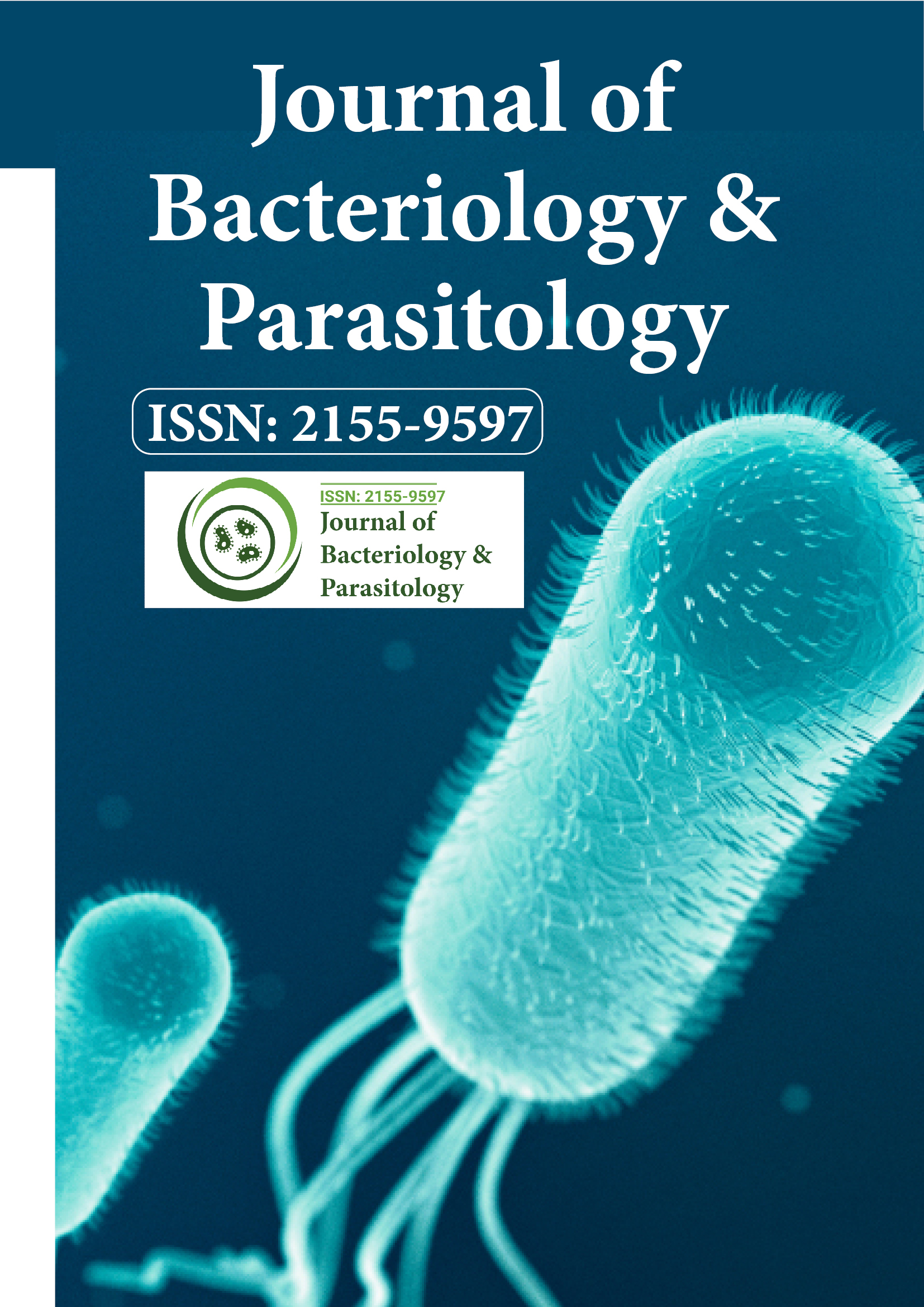Indexed In
- Open J Gate
- Genamics JournalSeek
- Academic Keys
- JournalTOCs
- ResearchBible
- Ulrich's Periodicals Directory
- Access to Global Online Research in Agriculture (AGORA)
- Electronic Journals Library
- RefSeek
- Hamdard University
- EBSCO A-Z
- OCLC- WorldCat
- SWB online catalog
- Virtual Library of Biology (vifabio)
- Publons
- MIAR
- Geneva Foundation for Medical Education and Research
- Euro Pub
- Google Scholar
Useful Links
Share This Page
Journal Flyer

Open Access Journals
- Agri and Aquaculture
- Biochemistry
- Bioinformatics & Systems Biology
- Business & Management
- Chemistry
- Clinical Sciences
- Engineering
- Food & Nutrition
- General Science
- Genetics & Molecular Biology
- Immunology & Microbiology
- Medical Sciences
- Neuroscience & Psychology
- Nursing & Health Care
- Pharmaceutical Sciences
Perspective - (2024) Volume 15, Issue 3
Molecular Mechanisms of Host Immune Evasion by Bacterial and Parasitic Pathogens
Lewis Sidney*Received: 27-Aug-2024, Manuscript No. JBP-24-27258; Editor assigned: 30-Aug-2024, Pre QC No. JBP-24-27258 (PQ); Reviewed: 13-Sep-2024, QC No. JBP-24-27258; Revised: 20-Sep-2024, Manuscript No. JBP-24-27258 (R); Published: 27-Sep-2024, DOI: 10.35248/2155-9597.24.15.521
Description
The complex battle between host immune systems and microbial pathogens is a defining aspect of infectious diseases. Bacterial and parasitic pathogens have evolved cultivated mechanisms to evade the host immune response, allowing them to survive, replicate and cause disease. Understanding these molecular mechanisms not only elucidates the dynamics of host-pathogen interactions but also informs the development of novel therapeutic strategies and vaccines.
Bacterial immune evasion mechanisms
Bacterial pathogens employ various strategies to circumvent host immune defenses, ranging from physical barriers to cultivate biochemical interactions.
Antigenic variation: One of the well-documented strategies is antigenic variation, where bacteria alter their surface antigens to evade recognition by the immune system. For example, Neisseria gonorrhoeae changes its pili and outer membrane proteins frequently, preventing the host from mounting a lasting immune response. This capability enables persistent infections, as the immune system is unable to recognize and eliminate the constantly changing bacterial population.
Biofilm formation: Biofilms are structured communities of bacteria embedded in a self-produced extracellular matrix. Pathogens like Pseudomonas aeruginosa can form biofilms on mucosal surfaces or medical devices, significantly enhancing their resistance to both innate and adaptive immune responses. The biofilm matrix acts as a physical barrier that hinders the penetration of immune cells and antibodies. Additionally, the bacteria within biofilms often exhibit a phenotypic shift that makes them less susceptible to antimicrobial agents.
Secretion systems: Many bacteria possess specialized secretion systems that allow them to inject effector proteins directly into host cells. For instance, the Type III Secretion System (T3SS) utilized by pathogens such as Salmonella and Shigella facilitates the delivery of virulence factors that manipulate host cell signaling pathways, promoting bacterial survival and replication. These effector proteins can induce apoptosis in immune cells or alter immune responses to create a more favorable environment for the bacteria.
Manipulation of immune signaling: Bacterial pathogens can also interfere with key immune signaling pathways. For example, Listeria monocytogenes can evade macrophage-mediated clearance by stashing listeriolysin O, which disrupts phagosome maturation. This allows the bacteria to escape into the cytoplasm, where they can replicate without being exposed to the harsh conditions of the phagolysosome.
Immune system mimicry: Some bacteria can mimic host molecules, which helps them avoid detection. For instance, the capsule of Streptococcus pneumoniae contains polysaccharides that resemble host cell surface structures, allowing the bacteria to evade opsonization and phagocytosis by immune cells.
Parasitic immune evasion mechanisms
Parasitic pathogens also exhibit a range of strategies to evade the host immune system, with many mechanisms mirroring those seen in bacterial pathogens but adapted to their complex life cycles.
Antigenic variation: Similar to bacteria, many parasites, such as Trypanosoma brucei, engage in antigenic variation. The parasite expresses a single Variant Surface Glycoprotein (VSG) at a time and the periodic switching of VSGs prevents the host from effectively targeting the infection. This results in chronic infections, as the immune system continuously targets different antigenic forms.
Immune suppression: Many parasitic pathogens can actively suppress the host immune response. For example, Schistosoma mansoni secretes molecules that modulate host immune signaling pathways, reducing the activation of T helper cells and promoting a Th2 response. This shift favors the survival of the parasite while dampening the overall immune response against it.
Intracellular life cycle: Certain parasites, like Plasmodium spp. (the causative agent of malaria), have evolved to live within host cells. By residing inside hepatocytes or erythrocytes, these parasites avoid exposure to circulating antibodies and immune cells. Additionally, Plasmodium can modulate the host cell's immune response by altering the expression of surface proteins, further evading immune detection.
Development of protective structures: Many parasites have developed protective structures that shield them from the host immune system. The cyst wall of Toxoplasma gondii serves as a physical barrier that limits the access of immune cells and antibodies. These cysts can persist in host tissues for extended periods, often leading to chronic infections.
Exploitation of host immune responses: Parasitic pathogens can exploit the host's own immune responses to their advantage. For instance, Leishmania species can induce the formation of granulomas, which serve as protective niches for the parasites while simultaneously diverting immune responses away from clearing the infection.
Conclusion
The ongoing co-evolution between pathogens and host immune systems underscores the complexity of infectious diseases. Bacterial and parasitic pathogens have developed an arsenal of molecular mechanisms that enable them to evade immune detection and elimination. Understanding these strategies not only provides insight into the biology of pathogens but also presents opportunities for the development of targeted therapies and vaccines. Continued research into host-pathogen interactions is essential for advancing our ability to combat infectious diseases effectively.
Citation: Sidney L (2024). Molecular Mechanisms of Host Immune Evasion by Bacterial and Parasitic Pathogens. 15:521.
Copyright: © 2024 Sidney L. This is an open-access article distributed under the terms of the Creative Commons Attribution License, which permits unrestricted use, distribution, and reproduction in any medium, provided the original author and source are credited.

